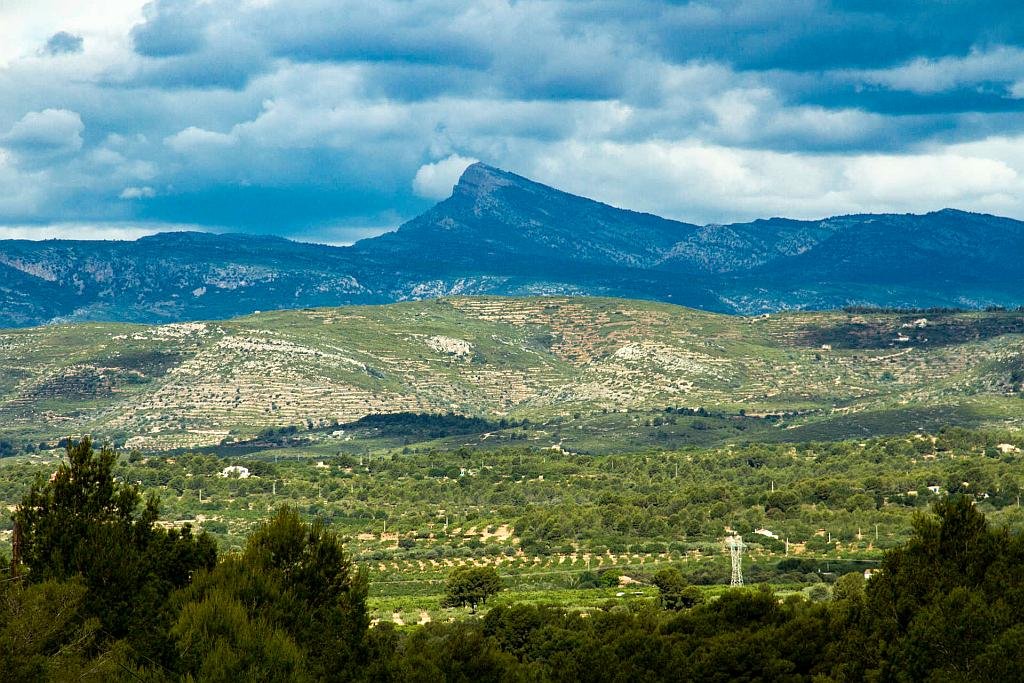- Region: Valencian Community
- Province: Castellón
- Declared a Natural Park:
- Park surface area: 1094 hectares
- Towns and villages: Vistabella del Maestrat, Xodos, Villahermosa del Río
Points of interest
The Impressive and imposing summit of Penyagolosa at 1,814 metres with its immense panorama of the Castellón region and neighboring lands of Aragón is known as the “magical mountain”, an emblem of Castellón and is one of the references of Valencian natural and cultural heritage. The peak of the Macizo Penyagolosa Natural Park can be seen from all over La Plana and even from inland regions such as Alto Palancia.
You can reach the foot of Penyagolosa from different points but the entrance through Vistabella del Maestrat is the best known. There is also good access from the town of Xodos or from Villahermosa del Río.
In addition to some excellent short-distance trails inside the Natural Park, the long distance GR7 crosses this area and the GR33 Sender de la lluna Plena which begins on the coast, in Castellón and ends here in Sant Joan de Penyagolosa.
Find a hotel close to the Macizo Penyagolosa Natural Park
[booking_product_helper shortname=”macizo penyagolosa natural park (valencia)”]
Flora
The great biodiversity prevailing in the Penyagolosa massif is caused by the different calcareous and siliceous substrates and by the combination of continental and Mediterranean climates. The vegetation that develops in the natural park varies depending on the altitude and geology.
In the lower elevations the black pine (Pinus nigra) grows, in the sunny and with siliceous substrate we find the maritime pine (Pinus pinaster) and in the shady and highlands the Scots pine (Pinus sylvestris) predominates. It is also frequent to observe formations of sessile juniper (Juniperus thurifera), Valencian oak (Quercus faginea), yew (Taxus baccata) and interesting formations of Pyrenean oak (Quercus pyrenaica). Several tree species have been cataloged and protected in the Park and are classed as “Árboles Monumentos“
- Pi Gros de les Quatre Forques. Black pine (Pinus nigra Arnold) about 200 years old, located at the entrance to the Planás camping area.
- Pi Roig de Manuel Calduch i Almela. Scots pine. (Pinus sylvestris) its age is estimated at about 100 years and it is located close to the hermitage of Sant Joan de Penyagolosa, one hundred meters from the forest track that goes up to the Peak.
- Pi Gros de les Cinc Branques. Black pine. (Pinus nigra Arnold) is estimated to be about 200 years old and it is located within the Sant Joan pine forest that rises to the Vela I recreational area.
- Teix del Barranc de la Teixera. Yew (Taxus baccata L.) is close to 1,000 years and it is found in the ravine of the same name.
Fauna
Birds of prey such as golden eagle (Aquila chrysaetos), Bonelli’s eagle (Hieraetus fasciatus) and eagle owl (Bubo bubo) are present ans also look out for crossbill (Loxia curvirostra), great spotted woodpecker (Dendrocopos major) and red-billed chough (Pyrrhocorax pyrrhocorax).
Among the mammals, the presence of wildcat (Felis silvestris), Spanish ibex (Capra pyrenaica), genet (Genetta genetta), badger (Meles meles) and roe deer (Capreolus capreolus) is important.
The largest Valencian population of the troglodyte bat (Miniopterus schreibersii) can also be found
The rock lizard (Podarcis muralis) has an important population here and shares its territory with other reptiles and amphibians such as Iberian water frog (Rana perezi), Natterjack toad (Bufo calamita), Fire Salamander (Salamandra salamandra), Iberian wall lizard (Podarcis hispanica), Bedriaga’s Skink (Chalcides bedriagai), Viperine Snake (Natrix maura), Lataste’s Viper (Vipera latastei) and Montpellier Snake (Malpolon monspessulanus).
Among the invertebrate fauna, look out for the Spanish moon moth (Graellsia isabellae) and Apollo butterfly (Parnassius apollo)
Information/Visitors Centers
Centro de Interpretación “La Casa Forestal”
The interpretation center of the Natural Park has plenty of information about natural resources, botany, birds, geology, and heritage. It is easy to find and located close to the hermitage of Sant Joan de Penyagolosa in Vistabella del Maestrat
The official website for the Macizo Penyagolosa Natural Park is here: https://parquesnaturales.gva.es/es/web/pn-penyagolosa/centro-de-visitantes
Iberia Nature Forum
Struggling with identifying those bugs and beasties? Why not check out the Iberia nature Forum!
Discover the Iberia Nature Forum – Environment, geography, nature, landscape, climate, culture, history, rural tourism and travel.
I’ve been living in this lovely area of Western Andalucia for the last 20 years or so and dedicate most of my time to the running of English language tourist information websites for the towns of Cádiz, Ronda, Grazalema, the famous or infamous Caminito del Rey, and also Wildside Holidays, which promotes sustainable and eco-friendly businesses running wildlife and walking holidays in Spain. My articles contain affiliate links that will help you reserve a hotel, bus, train or activity in the area. You don’t pay more, but by using them you do support this website. Thankyou!
